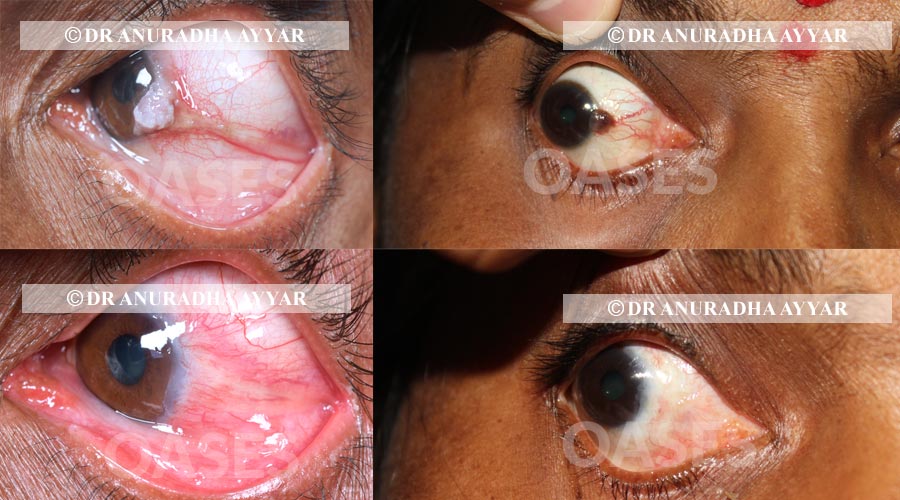What you need to know about eye cancer
Eye cancer is a type of cancer that impacts the cells of the eye and can occur within the eye, on the
surface of the eye, around the orbit, or the eyelids and tear ducts. Based on the area where they
occur and the severity of the case, the type and treatment of cancer is diagnosed.
At OASES, our team of doctors comprise of ophthalmologists that have specialized in ocular
oncology thus ensuring all cases are diagnosed and treated in a timely and effective manner.
Ocular surface squamous neoplasia (OSSN)
This condition refers to a malignancy of the conjunctiva and cornea. It is typically presents as a
growth or mass on eye surface and tends to progress slowly. People who are highly exposed to the
sun and those who are immunocompromised (transplant patients, with HIV, and other conditions
that reduce immunity) are more at risk of developing this condition.
Diagnosis requires a physical examination by an ophthalmologist and may require a biopsy for
confirmation. In some cases, OSSN can be treated by chemotherapy with Interferons, Mitomycin C
eye drops while others may require surgery. The decision is taken after detailed history taking and
examination of the eye by the consultant.
Eyelid Cancer
In the eyelid region, the first signs of cancer may appear as a mass, thickening or ulceration, or loss
of eyelashes. Timely diagnosis and treatment of this cancer is critical to prevent it from spreading to
the orbit or elsewhere in the body. The growth may be discolored or even impact the position of the
eyelid. In case of any such abnormal appearance of the eyelid, it is essential to consult an
Oculoplasty surgeon at the earliest.
Diagnosis of this condition can be done on clinical examination and after a biopsy to check whether
the growth is benign or malignant. Larger masses will need CT scan/MRI and other investigations as
well. Treatment may include surgical removal and eyelid reconstruction. After pathological
examination, further treatment in the form of chemotherapy, radiation or even cryotherapy may be
discussed.
Intraocular Cancer
Cancer that starts inside the eyeball is called intraocular cancer. The most common intraocular
cancers are melanoma and retinoblastoma. In general, treatment options for these conditions
involve surgery, radiation, and chemotherapy.
Retinoblastoma
Retinoblastoma is a cancerous tumor in the retina which is located at the back of the eyeball and is
commonly seen in children. The symptoms commonly manifest as inflammation or whitening of the
pupil.
Diagnosis requires a physical examination by an ocular oncologist followed by a CT scan and other
investigations as may be needed. The treatment will depend on staging and grouping of the cancer.
Modalities include surgery, cryotherapy, chemotherapy, radiation. The treatment is a multi-modal
and will involve an Ocular oncologist, a paediatric oncologist, paediatrician, radiation oncologist to
name a few.
Uveal Melanoma
Melanoma is a form of pigmented cells that form a tumor inside the eye. It can be of three types:
-
Iris melanoma
-
Ciliary body melanoma
-
Choroidal melanoma
Symptoms include pigmentation, poor or blurred vision and a sensation of flashing lights. Diagnosis
requires an expert ophthalmologist as a biopsy is not possible in all cases. Based on the size and
severity of the case, treatment may include laser therapy, radiation therapy, or surgical excision.
Thus, when it comes to matters of the eye, an examination by a proficient ophthalmologist is
important to ensure timely diagnosis and treatment of anything that may be disease causing. Be
sure to schedule a routine eye screening every 6 to 12 months to ensure your eyes are healthy and
your vision clear. This screening routine is recommended for all age groups from a renowned eye
care specialist.

